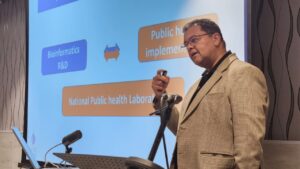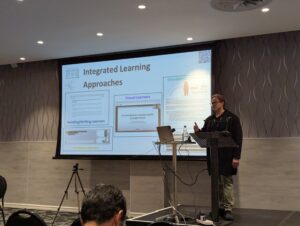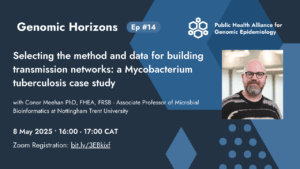Thanks to the Bill and Melinda Gates Foundation, PHA4GE received funds that were utilized to implement standardized bioinformatics practices, pipelines, and data structures in either anti-microbial resistance (AMR) or SARS-CoV-2 sequencing within national public health laboratories. We look at six teams, from five different low to middle income countries (LMICs), that successfully completed these projects.
PHA4GE chats to Dr Samuel O. Oyola and Dr Jean-Baka Domelevo Entfellner from the International Livestock Research Institute, Kenya. They share on what worked well, what could have been done differently and what they envision as next steps in being responsive to disease outbreaks.
Dr. Oyola and Dr. Entfellner*, what worked well in implementing the SARS-CoV-2 project?
The practical implementation of technical sample and data analysis worked well. This started with a very intensive training of research assistants on the general lab molecular procedures in a laboratory where varied genomic projects have been running. As a result of a worldwide effort to control SARS-CoV-2, technical information of developing a streamlined workflow on genomic surveillance was readily available and regularly updated by different research groups. Our team were vigilant in acquiring latest technical development and implementing efficiently under the supervision of the PI. In a relatively short period of time, technical aspects of SARS-CoV-2 genomic analysis and near real-time reporting of results to the ministry of health were established and scaled to high throughput levels. Access to seed funding, presence of a lead genomic expert within the institute, steady sample collection and referral and good collaboration with the government and her public health teams were the major drivers of this success.
In your own opinion, what did not work well and how could this have been done differently?
Although great success was achieved in the end, a steady supply of reagents was a big challenge. With global demand of similar reagents, laboratories in the developing world received a raw deal. There was massive delay in procuring and delivery of critical reagents. Coupled with a dynamic workflow where new and optimized reagents were continuously produced, it was difficult to keep up-to-date with the improvement in sample analysis. This challenge could have been subverted by donors involvement to ensure direct access to critical reagents from manufactures by the funded labs in the developing world.
What are the next steps for you and your team?
One experience gained from the ongoing global pandemic is the powerful role of genomics in controlling a disease outbreak. We have strengthened our genomic platform with updated equipment including sequencing machines and high-performance computing infrastructure. We have also established a platform for genomic training and prepared materials for a continuous capacity development program. Our goal is to create and establish a genomic response program to pandemics and disease outbreak. This platform will continue to run research programs on detection, discovery and genomic characterization of emerging and potential pandemic-causing pathogens. We will focus on creating pathogen genomic analysis tools and pipelines with ability to analyze different kinds of pathogens. Additionally, we are expanding our network for sample collection and referral systems to ensure that our surveillance logistics are swift, timely and efficient.
*Dr Samuel O. Oyola and Dr Jean-Baka Domelevo Entfellner worked with Collins Muli, Gilbert Kibet, Daniel Ouso, Shebbar Osiany, Edward Kiritu, Paul Dobi and Dr Sonal Henson to complete this project.



